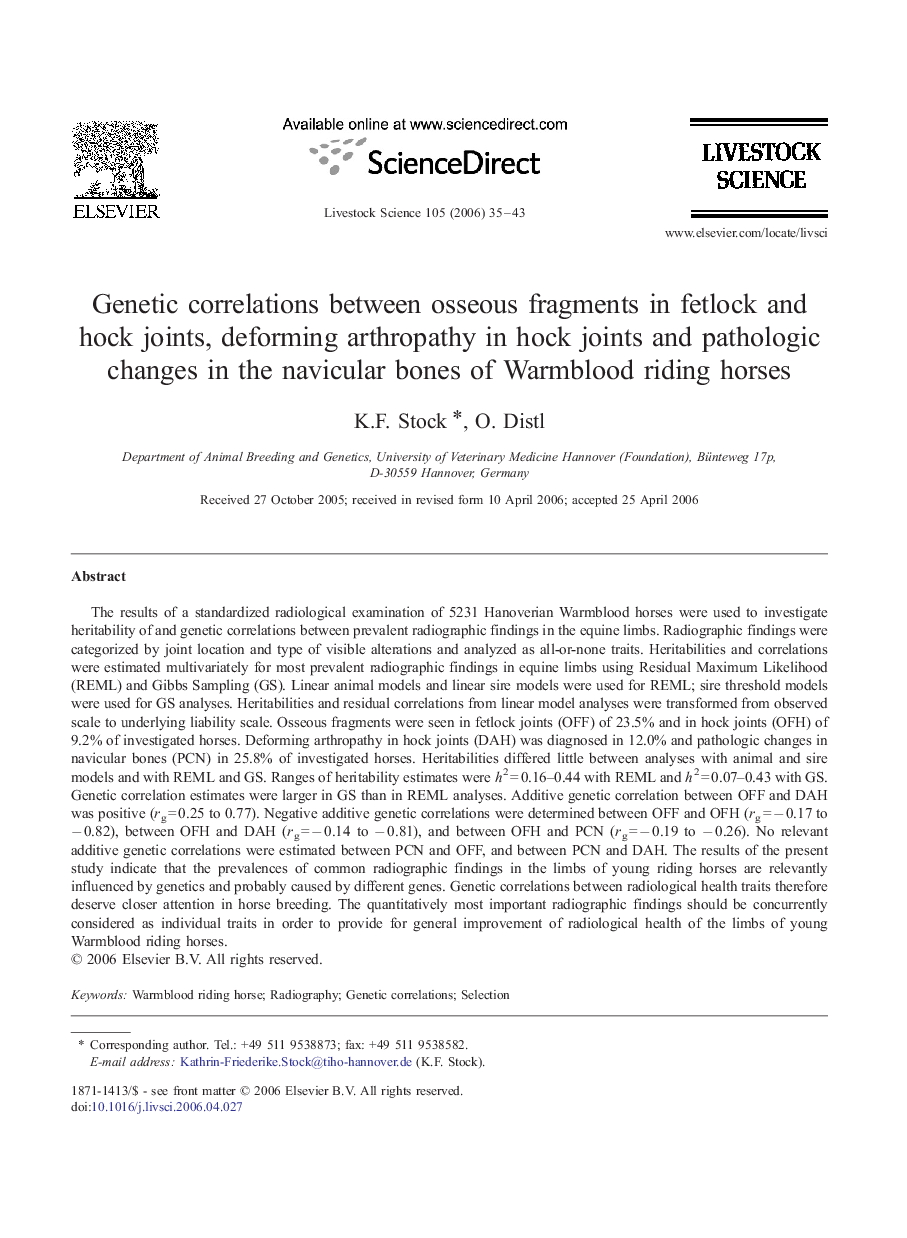| کد مقاله | کد نشریه | سال انتشار | مقاله انگلیسی | نسخه تمام متن |
|---|---|---|---|---|
| 2449098 | 1554029 | 2006 | 9 صفحه PDF | دانلود رایگان |

The results of a standardized radiological examination of 5231 Hanoverian Warmblood horses were used to investigate heritability of and genetic correlations between prevalent radiographic findings in the equine limbs. Radiographic findings were categorized by joint location and type of visible alterations and analyzed as all-or-none traits. Heritabilities and correlations were estimated multivariately for most prevalent radiographic findings in equine limbs using Residual Maximum Likelihood (REML) and Gibbs Sampling (GS). Linear animal models and linear sire models were used for REML; sire threshold models were used for GS analyses. Heritabilities and residual correlations from linear model analyses were transformed from observed scale to underlying liability scale. Osseous fragments were seen in fetlock joints (OFF) of 23.5% and in hock joints (OFH) of 9.2% of investigated horses. Deforming arthropathy in hock joints (DAH) was diagnosed in 12.0% and pathologic changes in navicular bones (PCN) in 25.8% of investigated horses. Heritabilities differed little between analyses with animal and sire models and with REML and GS. Ranges of heritability estimates were h2 = 0.16–0.44 with REML and h2 = 0.07–0.43 with GS. Genetic correlation estimates were larger in GS than in REML analyses. Additive genetic correlation between OFF and DAH was positive (rg = 0.25 to 0.77). Negative additive genetic correlations were determined between OFF and OFH (rg = − 0.17 to − 0.82), between OFH and DAH (rg = − 0.14 to − 0.81), and between OFH and PCN (rg = − 0.19 to − 0.26). No relevant additive genetic correlations were estimated between PCN and OFF, and between PCN and DAH. The results of the present study indicate that the prevalences of common radiographic findings in the limbs of young riding horses are relevantly influenced by genetics and probably caused by different genes. Genetic correlations between radiological health traits therefore deserve closer attention in horse breeding. The quantitatively most important radiographic findings should be concurrently considered as individual traits in order to provide for general improvement of radiological health of the limbs of young Warmblood riding horses.
Journal: Livestock Science - Volume 105, Issues 1–3, December 2006, Pages 35–43